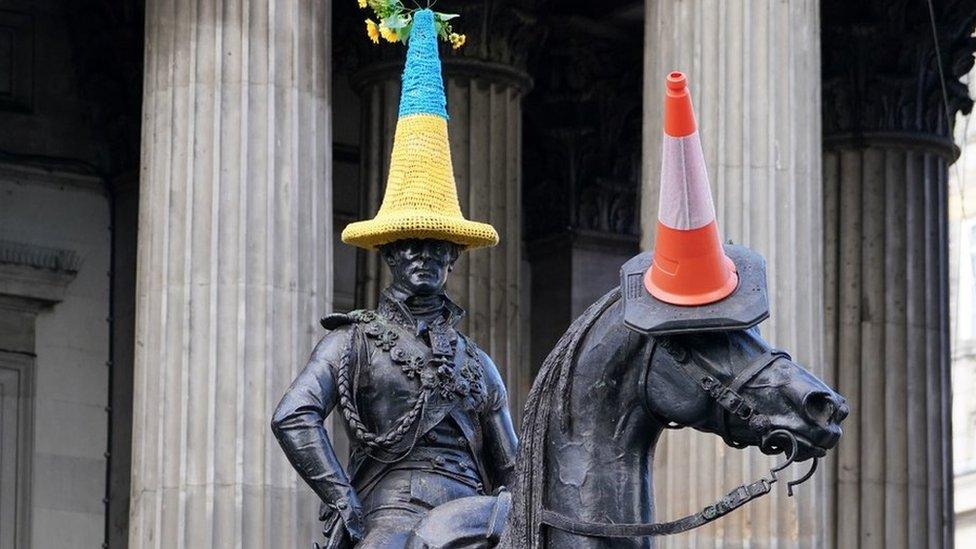Duke of Wellington: The traffic-coned Glasgow statue that inspired Banksy
- Published
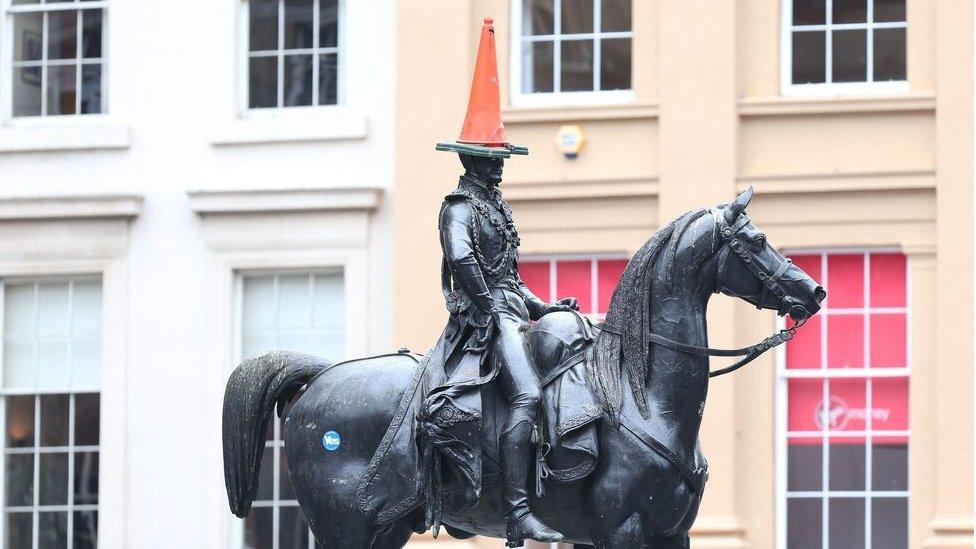
The statue is a Glasgow landmark
For decades, Glaswegians have capped the Duke of Wellington statue outside the Gallery of Modern Art with a traffic cone.
Locals have battled the council over the placement of the cone for years.
But any attempts to free the Duke of his plastic hat are quickly thwarted and the cone is replaced within days.
Banksy called it his "favourite work of art in the UK", and said it is the reason he chose to hold his first exhibition in 14 years at the gallery.
A sign welcoming people to his exhibit states: "For anyone who isn't aware - the statue out the front has had a cone on its head continuously for the past 40 odd years.
"Despite the best efforts of the council and the police, every time one is removed another takes its place."
Now images of the cone-topped statue are used to promote Glasgow and feature on posters, coasters and key rings.
Gareth James, manager of the Goma, told BBC Radio Scotland's Good Morning Scotland programme that the red and white cone is always replaced anonymously.
"That notion of an anonymous art intervention is quite in common [with Banksy]," he said.
"And I think Banksy has picked up on that spirit of Glasgow of being a wee bit reckless and just getting on with it."
A banner outside of the exhibition has even replaced the "A" in Banksy with a traffic cone.
The tradition is thought to have been started by late night revellers in the 1980s.
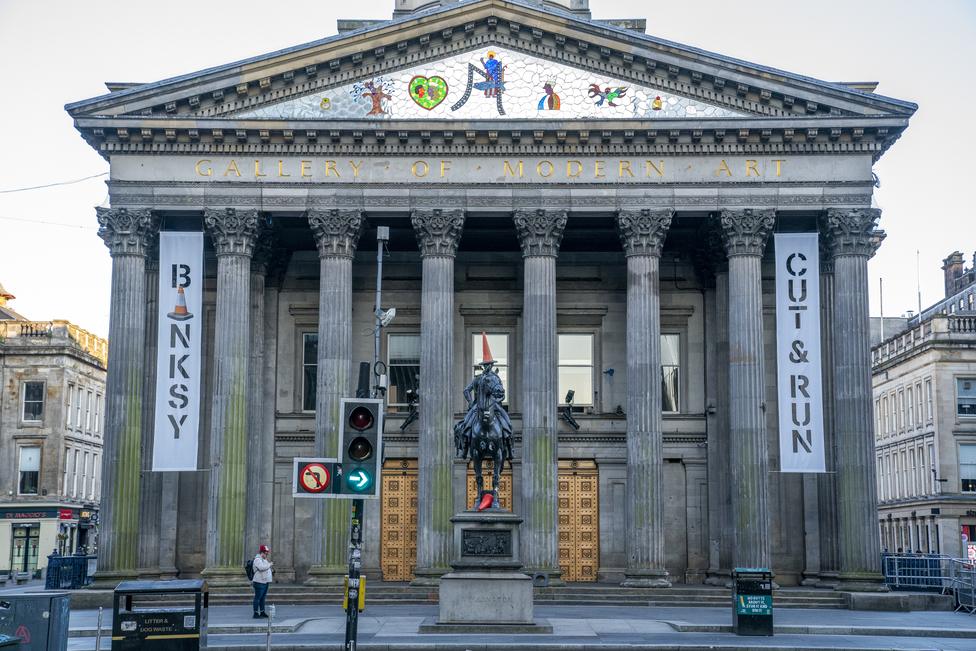
The Banksy exhibition opens on Sunday
Locals say the cone demonstrates Glaswegians' sense of humour and is as important as famous landmarks.
In 2000, Glasgow City Council took down the cone for promotional tourism-related photography.
But they were forced to replace it after an outcry by local people and politicians.
The council and Strathclyde Police (now Police Scotland) took a tougher stance five years later and told the public to stop replacing the cone, external.
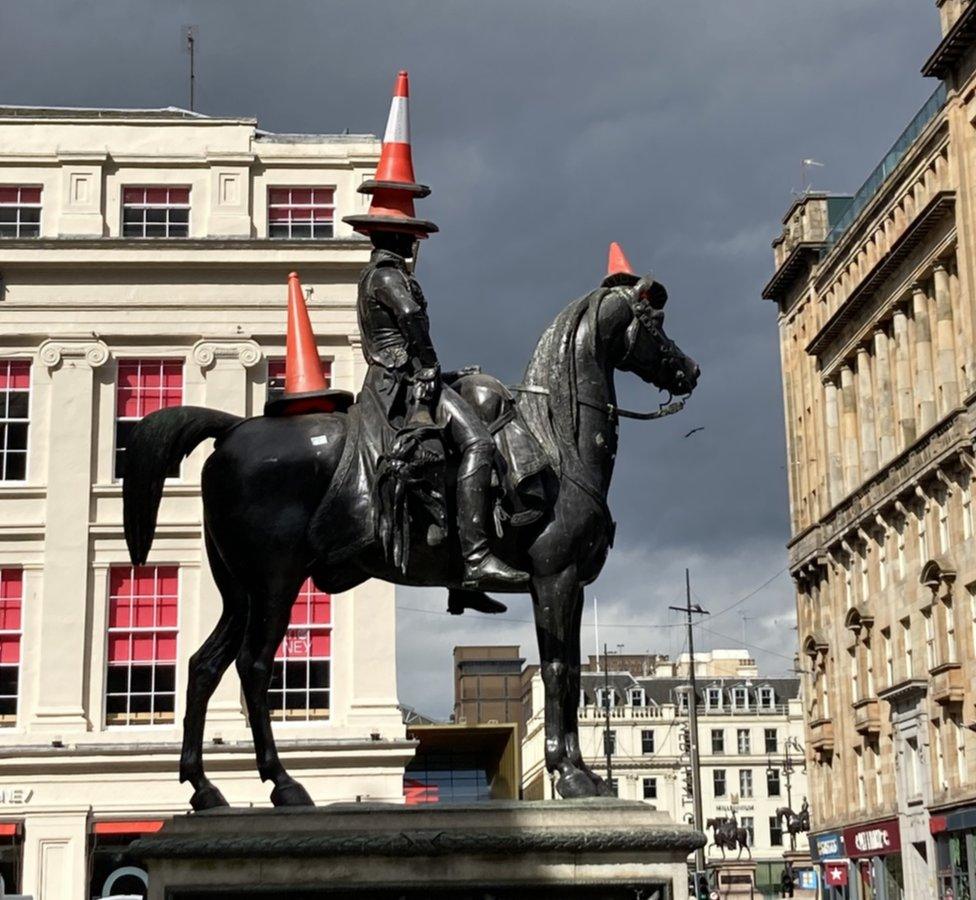
The statue has become a cone hotspot
They said the statue had been minorly damage and raised concerns around the potential for injury when attempting to place a cone.
The council reminded locals that the act was "vandalism" and police warned of criminal charges.
But the prank continued.
'Depressing image'
A council plan to raise the plinth of the statue in a bid to end the tradition was dropped following a backlash by Glaswegians in 2013.
The council had said that raising the height would end a practice which projected a "depressing image" of Glasgow.
It claimed the move would save the £10,000 cost of removing the cone 100 times a year.
Thousands signed an online petition and campaigners planned a rally.
But the council eventually climbed down from its position and the planning application was withdrawn.
Over the years, the Duke's headwear has diversified.
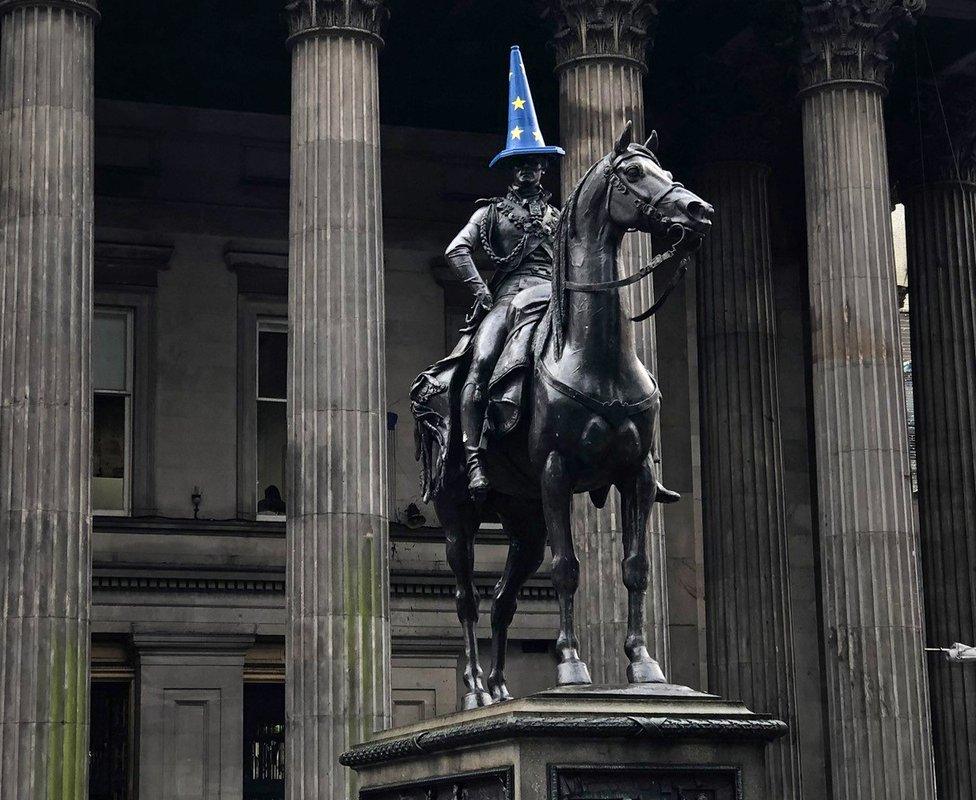
Pro-European supporters placed a cone painted to represent the EU flag
The statue wore a "Yes" cone and a Scotland a flag was fitted in the statue's stirrup in support of the Scottish Independence referendum in 2014.
In 2020, he was capped with a cone adorned with the colours of the EU flag on Brexit day and a Black Lives Matter cone in June.
And he wore a cone with a crocheted blue and yellow cover in a gesture of support for the people of Ukraine when the country was invaded by Russia in 2022.
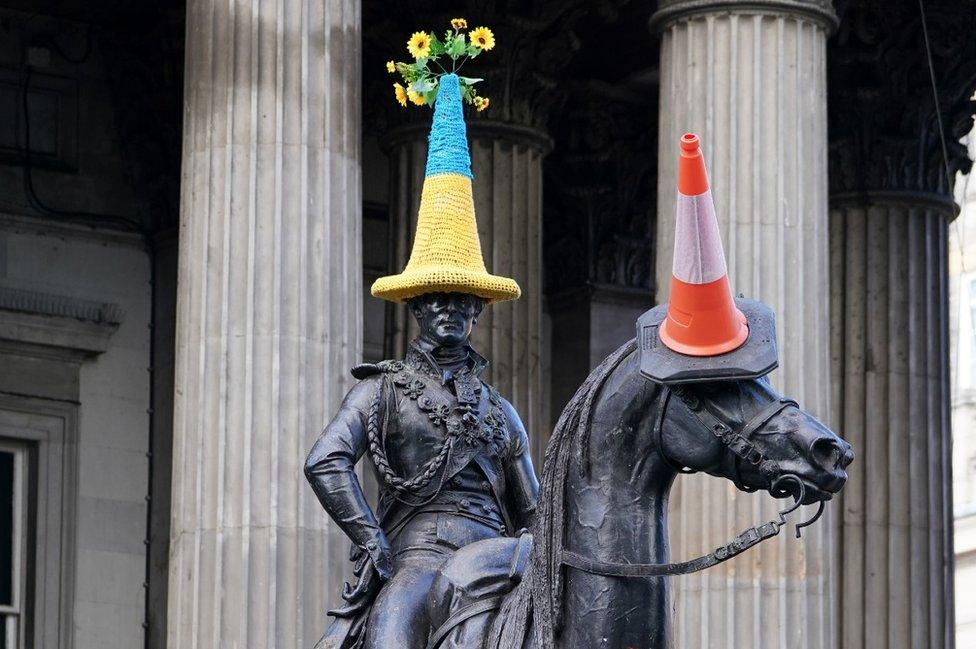
The Ukraine cone replaces the traffic cone which traditionally sits on the duke's head
It was topped with sunflowers - Ukraine's national flower - as a symbol of peace.
The cone hat image of the Wellington monument has previously been named by Lonely Planet as one of 10 Scottish inclusions in a list of the top 1,000 sights in the world.
Arthur Wellesley, the Duke of Wellington, is famous for defeating Napoleon at the Battle of Waterloo in 1815 and later becoming prime minister.
The statue of the Duke on his favourite horse Copenhagen was sculpted by Italian artist Carlo Marochetti and erected in 1844.
It is a Category A listed sculpture.
Related topics
- Published15 June 2023
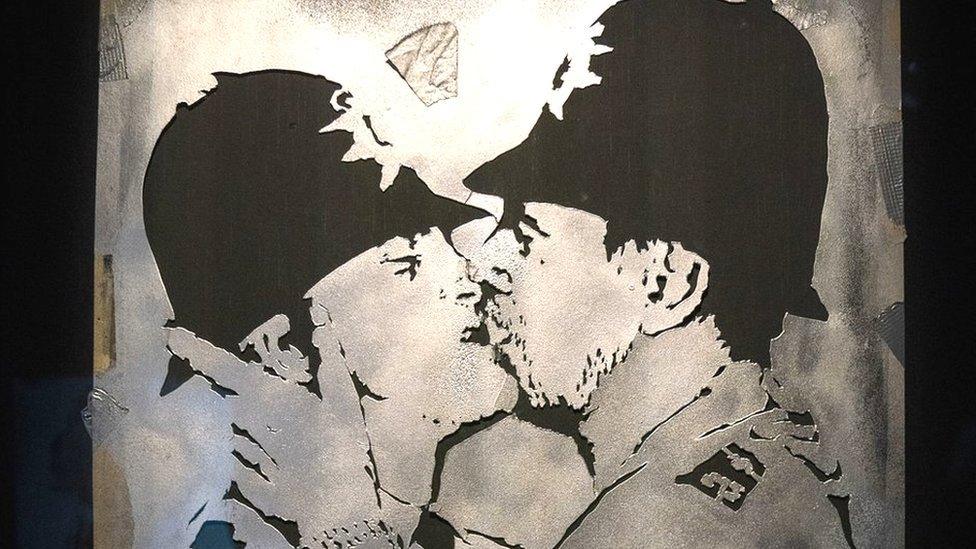
- Published8 March 2022
